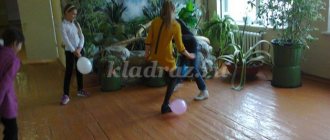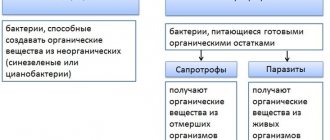First, about what kind of master classes I mean. Sometimes the child’s mother calls and says that the boy has been studying at an art school for 5 years, and now he really wants to master the art collage technique with his friends. I immediately advise you to contact art studios. There, classes are taught by artists who know how to work with this technique and, in a few lessons, will teach a child the basics of such a collage.
Holiday workshops are different. At such an event, children of different ages with different levels of training, temperament and patience gather to complete painstaking work. Such creative activities are held after any activity (quest, laser tag, sports program, game with an animator). Customers most often ask in this way to increase the time of the entertainment program.
In a short time, children manage to make some nice souvenir for themselves or as a gift for loved ones, communicate with each other and with the master in a calm environment, gain skills in working with new materials, and become interested in the proposed type of creativity.
Who will benefit from my advice?
Among the readers of the “Holiday Again” website there are many aspiring organizers of children's events. Of course, success comes with experience; each new holiday will be more spectacular than the previous one. It is best to work as an assistant with experienced craftsmen at the initial stage. I will draw your attention to the main details when preparing an interesting creative activity so that you feel more confident.
My recommendations can be used by active mothers, of whom there are surprisingly many in our country. I often correspond with such people, sometimes the whole evening I am impressed by the fountain of their ideas. When conducting master classes, you need to take into account a few important details, and everything will turn out great.
The tips will also be useful for animators who would like to increase their portfolio of services.
Creative master class - part of the holiday
Yes exactly. Creating crafts separately from the entertainment program is very rarely ordered from us, since this is precisely an addition to the holiday, and not its main part. At what point in the script you insert the master class is not so important.
This can be at the very beginning, while guests are gathering. A good way to meet and make friends (children are often friends with the birthday boy, but do not know each other), it is easy to fit into the theme of the holiday, and to make some props for a further entertainment program. For example, you can paint wooden keys, which then participate in the quest. Make a print on bandanas in which you can go on a pirate adventure.
The master class can be held in the middle of the holiday. For example, our little princesses decorate crowns or masks with beads and lace, which they then wear to the ball.
There is no need to conduct a quiet creative activity immediately after a wild play program. Let the children just rest, calm down emotionally, eat and talk to each other. After 20-30 minutes they can already be captivated by creating a beautiful craft. Children take the finished product home, so it is important to create an attractive souvenir, magnet, box, original panel, etc. Something that will remind children of the past holiday for a long time.
Who should conduct the master class?
The master class teacher is required to:
- Pedagogical skills.
- Teaching abilities.
- Methodological preparation.
- Psychological literacy.
- Intelligence.
- Culture of education.
All these qualities are combined into the skill required when conducting master classes, seminars, and trainings. But specifically for a master class, the teacher also needs to be able to do something well, to be a master in his field.
In the explanatory dictionary of S.I. Ozhegov there are several meanings of the word “master”:
- a skilled worker in some industrial field;
- a person who knows how to do something well, deftly;
- a specialist who has achieved high art in his field.
During the lesson, the master conveys experience to the students through direct and commented demonstration of work techniques , and the lesson itself is a form of cooperation between the master and students, in which the master also gains knowledge and experience.
The choice of a master depends on the request for training. The motivation of different groups of participants may be different:
- Beginners with work experience who want to improve their skills want to gain subject knowledge from the master class about methods and techniques of work in order to apply the experience gained in practice and increase the efficiency of their professional activities.
- For highly qualified specialists there is no need to repeat the actions of the master. They are interested in finding new forms and increasing the level of work.
Thus, communication between novice specialists and a master is aimed at satisfying the needs of students for new knowledge, and the interaction between a master and professionals is a full-fledged discussion in which both parties enrich each other’s experience.
An external specialist is not always required. In some cases, it is advisable to conduct training in a master class format within a team . For example, one employee is proficient in Microsoft Excel, which allows him to perform a certain type of task that it would be desirable to assign to other employees. However, they do not know the program well and will not be able to complete the task with the required speed and quality. In this case, the manager can assign an “advanced” employee to train others. Often a few sessions are enough for this. In this case, the master will be an employee who will perform certain actions, commenting on them and helping to repeat after himself. In such cases, the effectiveness of the master class is higher than any external seminar or training. It all depends on the current need.
Formats: streaming or educational
Everything is simple here. If you have 5-10 guests, you can give a lot of attention to each child. In 30-60 minutes, under the guidance of a master, children manage to make interesting drawings on T-shirts, create unusual florariums, decorate wooden objects using the decoupage technique, etc. Let's call it a training master class, since over a long period of time you can really learn something new. For example, master a glue gun.
If a grand holiday is planned for the children of company employees, to which more than 100 people from 2 to 14 years old are invited, the educational format is not suitable. In this case, several tables for the masters and 4-5 chairs for the participants of the event are placed in one area. Children will have a choice of what to do in a festive mood: paint gingerbread cookies, make bouquets, draw with a 3D pen, glue a polygonal mask, make a magnet out of felt, twist figures from balls, etc.
In this case, the craft takes 8-12 minutes, and a seat at the table is freed up for a new participant. With a streaming format, all 100 participants can take part in 3-4 simple master classes in 30-40 minutes.
We think through every detail
You can hold a culinary master class for children in any place convenient for you: in a cafe or restaurant, at home, in nature. The most important thing is to comply with all the requirements for preparing and holding the event:
- A workplace must be prepared for each participant. There should be enough space for all children;
- the theme and complexity of the recipes should be appropriate for the age of the little cooks;
- think about how to keep the little participants occupied while cooking or baking a dish (for example, making drinks, an exciting story or movie, a cooking game, etc.);
- prepare all the necessary utensils and attributes so that each participant receives his own instrument and personal task;
- take care of the quality of the products: they must be hypoallergenic, fresh and safe for children’s health;
- stock up on food in sufficient quantities (there should be a reserve in case something goes wrong);
- choose a “chef uniform” for each child - white aprons and caps. This will help you immediately get involved in the cooking game and protect your clothes from getting dirty.
Regardless of where you decide to hold a culinary event for children, you can choose from two show options:
- Each cook receives a personal task and, by completing it, contributes to the preparation of the common dish.
- All participants take turns trying themselves in one role or another or participate in each stage of cooking as a whole friendly team.
The first option is suitable for older children who can already efficiently complete the assigned task without the careful supervision of a teacher. The organizer only observes and corrects their actions. An educational master class with detailed instructions and collective work will be relevant for young participants aged 5-10 years. Sometimes you can combine these two options.
When organizing a culinary master class for a child’s birthday or other children’s holiday, you need to take care of his safety.
Take into account two important points of the event:
- maintaining personal hygiene, tell those present about the need to thoroughly wash their hands before starting food preparation and ensure that this requirement is fulfilled);
- careful handling of dangerous kitchen items such as graters, knives, electrical appliances (it is better not to let children under 6-7 years of age approach them, but to prepare all the ingredients in advance. Older children need to be closely monitored, and at the beginning of the show, familiarize them with the rules for using this or that utensils).
Thematic master class
What makes an activity themed?
- image of the presenter
- workplace design
- an introductory word from the master and a demonstration of finished works in one topic
- selection of consumables
- packaging of finished crafts
For example, gingerbread cookies can be of any shape. Prepare gingerbread in the shape of dinosaurs for painting - and this is a beautiful continuation of the Lost World holiday. Gingerbread snowflakes and Christmas trees are a hit at any New Year's holiday. Even simple round gingerbread cookies are planets in the space program, apples in the fairy tale about the Swan Geese, edible coins in the game Fort Boyard. It all depends on the presentation.
This is how thematic drawings on rice paper for blending, wooden blanks for painting, themes for decorating bags, and materials for making souvenirs are selected.
Often masters conduct classes in costumes. Well, it’s nice to make pies with Little Red Riding Hood, make handmade soap with “frozen” figures in the presence of the Snow Queen, and paint New Year’s clocks with the Snow Maiden.
Table decoration can also be themed. Painting dishes at an autumn festival surrounded by bouquets of red and yellow leaves is simply a fairy tale. Everything should be beautiful and harmonious: your appearance, voice, communication style, selection of tools and materials, effective packaging of the finished souvenir.
How to come up with an interesting master class
Children are always interested if the result is bright and easy to do. This means that you need to very carefully select tasks according to age. For example, give very young children a ready-made figurine made from a sausage ball (when it doesn’t work out, interest disappears), only offer to glue on the eyes and mouth. All! The baby will be proud of “his dog.” Schoolchildren in grades 1-4 will already do everything on their own.
The work of painting a New Year's ball with thin brushes can be complex and painstaking; it makes sense to offer this to children over 7 years old. Preschoolers enjoy dipping parts of the figurine coated with glue into glitter; it also turns out beautifully and extremely simply. They did everything THEMSELVES.
Often masters approach things on a grand scale. They select photographs with examples of finished work and display them in the form of a presentation on the screen. They include music appropriate to the topic or even a fairy tale. They come up with creative pseudonyms for each participant in the master class, conduct interesting quizzes (this happens especially often during a culinary master class), draw attention to the successful creative discoveries of each child, describe in detail each finished work, or help the child with self-presentation.
It is also important to set a goal. For whom is this toy made using the felting technique, to whom can you give a painted cup, a box using the decoupage technique, a thick candle with an Easter plot, etc. When a child knows that he is making not just a souvenir, but something necessary and beautiful, interest increases.
Be sure to give a small gift to each participant. Better is one that can then be used during creative activities at home: an additional set of clasps for bracelets, a base for a pendant, a bag of beads, another clean wooden heart blank, etc.
Methodology for organizing and conducting a master class by a teacher
Teaching means doubly learning.
J. Joubert
Having entered the Russian language, the word “master class” acquired the broadest meaning. This is now the name for almost any seminar conducted by an experienced person, no matter in what field of knowledge. In recent years, master classes have begun to be widely held in the education system.
Teachers need to constantly learn and learn from each other. And the best incentive for this should be the mutual exchange of professional experience, mutual training, and mutual improvement of their teaching activities. The “mutually” factor is especially important here. After all, direct reproduction, mechanical repetition of professional achievements today is practically futile; it does not give the desired effect. The optimal form of professional training today is a master class.
In the pedagogical literature, there are several dozen definitions of the concept of “master class”. In these recommendations, the emphasis is on the definition of M. M. Potashnik, who outlined the key properties of a master class as a form of professional training for teachers. In his opinion, a master class (a form of apprenticeship) is an active form of creative self-realization of a teacher, when a master teacher conveys his experience to listeners through direct and commented demonstration of working techniques. [2, p. 78]
That is, a master class in education is a form of improving the professional skills of teachers, the purpose of which is to get acquainted with the author’s work, master and practice practical skills in various methods and technologies of teaching and education. Participants gain knowledge in the form of discoveries, trials, mastery of those methods and methods that are transmitted by the Master, and such characteristic techniques that are unique to this master (the so-called “highlights”).
Master classes are similar to advanced training courses. For teachers, this is an opportunity to get acquainted with new technology, new methods and proprietary developments. “Spectators” become experts, learn to analyze and compare their capabilities. At the same time learning and “The teacher is a master.” When preparing and conducting a master class, the “Teacher-Master” acquires various skills in working with an audience, learns to reflect on his actions, and much more. For all master class participants, this means a step forward in their business. A well-organized master class becomes a generator of ideas for all participants.
Advantages of a master class as a form of professional training:
- Form of transfer of practical experience (practice-oriented).
- Form of interactive interaction between teachers.
- A form of organizing active independent work of all participants. [4, p. 76]
Thus, master classes are an effective form of professional training:
- as a teacher who is active in finding ways to grow his teaching skills: an active teacher will reflect on his own pedagogical approach, find ways to update his activities and integrate new techniques and forms of work into his individual pedagogical style;
and for a teacher who is passive about his professional development: a passive teacher, performing a certain algorithm of actions, will inevitably be included in active cognitive activity.
Master class principle: “I know how to do it. I will teach you." That is, the main objectives of the master class are: generalizing the teacher’s experience on a certain problem, transferring this experience, jointly practicing methodological techniques, providing real assistance to the participants of the master class in determining the tasks of self-development and forming an individual self-education program.
When planning the work, the topic of the master class is formulated. The title of the topic should not contain “abstruse” professional terms. It should sound clear and simple. For example: “Learning to understand the text.” Next, the fundamental goals are determined, to the achievement of which the entire meeting is subordinated.
The structure of master classes of various directions is built on a principle that reflects the logic of the cognition process: input of new knowledge, assimilation of knowledge, reflection.
The first is the theoretical part of the lesson. At this stage, the pedagogical experience of the master class leader in a certain area of activity is presented.
The second part of the master class is devoted to practicing the acquired knowledge in the process of acquiring the necessary skills. At this stage, the master class participants act as students, and the leader acts as a teacher. At this stage, it is important for each teacher to understand the effectiveness of the pedagogical technology being studied.
The third stage is reflection. Teachers unite in groups and develop a lesson and topic plan within the framework of the teaching experience being studied. The results of the work are presented for discussion. It is very important that each participant in the master class receives specific recommendations for practical activities.
Based on this structure, methodologists have developed various technologies for step-by-step organization of master classes. G. A. Russkikh divided the master class into five stages: presentation of pedagogical experience by the master teacher, presentation of the system of educational activities, conducting a simulation game, modeling and reflection. [3, p. 38–40]
The program of the master class on the technology of A. V. Mashukov is divided into the following components: induction, self-construction, socio-construction, socialization, advertising, rupture and reflection. [1, p. 3]
A master teacher can choose various forms of conducting master classes. The choice of form is determined by the established style of professional activity.
The master class can be conducted in the following forms:
1) in the form of a lesson with students - when the structure of the master class shows a fragment of a direct lesson with students using the selected technology or methodology. The duration of the lesson is determined individually, usually less than a lesson or lesson. The lesson should be structured in such a way that the intended method is clearly visible. During the lesson, the teacher-master does not pay attention to the students of the master class. After the lesson, there is a brief explanation of the essence of the method, its discussion and presentation of the final results.
2) in the form of a lesson with an audience - simulation, when the students of the master class act as students. The introductory part remains traditional, and the main part is an imitation of the lesson. Requirements for the main part:
do not treat adults like children;
- the complexity of the proposed material should correspond to the experience of the listeners;
follow the “game” (imitation) throughout the entire time and do not explain what you are doing and why;
make it clear that this stage has been completed;
- before giving your explanations, ask the participants what they saw, understood, felt;
- note what you wanted to demonstrate and whether it could be clearly seen in this fragment;
In the final part there is a discussion of the proposed technology and reflection.
3) with demonstration of video clips of lessons and extracurricular activities, when a video clip of a lesson is used as an example. Before the demonstration, the teacher-master tells the participants what to pay attention to. Video clips should clearly demonstrate what is being said and be of good quality.
There should always be a conclusion as a logical conclusion. It may include one’s own attitude to the matter, gratitude to the listeners, distribution of prepared reminders, etc. The result of the “master class” is a model that was developed by the “teacher-Student” under the guidance of the “teacher-Master” with the aim of applying this model in his own practice activities.
After conducting a master class, the “master teacher” must adequately analyze the results of his activities. The effectiveness of preparing and conducting a master class is assessed according to the following criteria:
- A clearly stated problem.
- Compliance of the topic with the content.
- Motivation.
- Innovation.
- Disclosure of the essence of the method, technique, or its features.
- Grammatically correct speech.
- Sequence of presentation.
- Interaction with the audience.
- Ability to improvise.
- Creation.
- Fulfillment of assigned tasks.
- Reflective activity.
- Practical significance.
Thus, a master class must have logical completeness, be effective, contain a set of optimal means of solving the goals and objectives of the lesson, demonstrate the personal interests and characteristics of the competitor, his education, breadth of outlook, the ability to go beyond the scope of his subject, rise to philosophical generalizations, show social and civic maturity.
Literature:
- Mashukov A.V. Organization and conduct of master classes. Guidelines. - Chelyabinsk, 2007. - 13 p.
- Potashnik M. M. Managing the professional growth of teachers in a modern school: a methodological guide. - M.: Pedagogical Society of Russia, 2010. - 448 p.
- Russkikh G. A. Master class - technology for preparing teachers for creative professional activities // Methodist. - 2002. - No. 1 - P. 38–40.
- Khurtova T.V. Forms of professional training for teachers: master classes. - Volgograd: Teacher, 2008. – 76 p.
- Latypova E.A. Master class is a modern form of improving the professional skills of teachers. /E.A. Latypov's method. Recommendations, - Neftekamsk, 2012 - 19 p.
Tools and materials
Where to buy tools and materials for a master class is a complex question that concerns all novice craftsmen. Every city has handicraft stores that have everything, but they are expensive. This is a backup option in case an urgent order is received, and customers are not too worried about the cost of the event.
It is cheaper to buy in online stores, but in this case there are often delays in delivery times and a lack of the materials you need in the required quantity. Finding 50 identical wooden eggs to paint can be very difficult.
There are also warehouses for handicrafts. The cost there is reasonable, but wholesalers only cooperate with legal entities, and the volume of purchases must be impressive.
The cheapest goods can be ordered on Chinese websites, but the journey will take a very long time. This is done only by experienced organizers who offer 150 different master classes and can afford to create their own warehouse of supplies.
Start with activities for which you can easily and quickly find supplies: mosaics (colored pieces of glass, pieces of porcelain or plastic, broken CDs), polymer clay modeling (it’s easy to store, buy basic colors and mix to create shades), toys from plastic dishes and bottles, figurines from pasta, creating a collage from photographs and magazine clippings, voluminous postcards from paper, etc.
Gift for creative inspiration
I have already mentioned such gifts. Sometimes it happens that children make excessive efforts when packing a souvenir or even at the time of decoration. Something breaks, gets smeared, or turns out differently than in the sample. To prevent tears, prepare a comforting gift. It could be the same gingerbread, but beautiful, painted by you as an example. This could be a tube with leftover paint (at home you can paint the bear's eyes again), a silicone mold for making soap, a marbles ball or something else.
Scenario
Here are the main steps of your master class:
- getting to know the master and each other, if the children are in such company for the first time
- demonstration of finished works
- a short story about the stages of the master class (can be in the form of a presentation)
- the history of the creation of such products (a brief history of rag dolls, where gingerbread cookies appeared, who was the first to grow succulents in small containers, what ancient people used to make jewelry, etc.)
- safety briefing
- familiarization with materials and tools, training tasks
- selection of a workpiece, discussion of future work, creation of layouts or sketches
- working on a souvenir
- background music (you can continue the story about the history of a craft, for kids - a fairy tale)
- attracting attention to the works of successful master class participants at all stages of work
- exhibition of works
- photo session with your souvenir in your hands
- packaging and gifts
- farewell to the master
- cleaning the premises (this is without the participants of the holiday, of course)
Form and theme
A master class usually involves a group of 7-15 participants . The most popular topic of master classes is familiarization with new technologies and methods of their application.
During the master class, participants can:
- Get acquainted with technological innovations.
- Share your opinion on the results obtained.
- Get advice on the topic.
- Discuss your own questions on the topic.
- Offer your own solutions to controversial issues.







